Why did so many Americans go to the West?
|
1. Searching for gold and silver
In 1848 gold was discovered in California, creating the famous Gold Rush of 1849. No railroads or paved roads reached that area of the country, but there were several wagon trails to the West. (See the red lines on the map below.) The yellow area in California shows the area where gold mining was concentrated. |
|
Wagons to the
West!
The picture below shows a group of wagons - called a wagon train - headed to the far West in 1869. Oxen were often used instead of horses to pull the wagons because of their great strength and endurance. Normally the people walked, to save the animals as much as possible. The trip took about three or four months. |

|
Getting the gold
The hope of striking it rich by mining gold in California or silver in Nevada continued to attract settlers to the West for decades. The picture below shows gold miners running gravel from a stream bed over a device called a sluice. Water from a stream washes the gravel and gold particles across the sluice. The heavy gold particles get caught on a rough sheet of metal along the bottom of the sluice. |

|
Underground
mining for gold and silver
After the gold in the rivers and streams was taken, things became much more difficult. Mining required heavy equipment and crews of underground miners. Below is a photo of a gold mine in Colorado. Notice the candle used for light inside the mine shaft. Silver mines in Nevada looked very similar, and drew thousands of people looking for work. |

2. Free land - The Homestead Act (1862) The Homestead
Act passed by the U.S. Congress in 1862 offered plots of land in
the West to anyone who would go and live there. (The word "Act" in this use means "law.")
The new law gave settlers free ownership of their plot of land after they lived on it for five years. Each plot was 160 acres, which totals one-quarter of a square mile. Before that time, the Great Plains was mostly ignored by people headed to the far West. After the Civil War, however, interest in the Great Plains suddenly grew. New steel plows and water pumping windmills, for example, made it easier to succeed as a farmer in that area. |
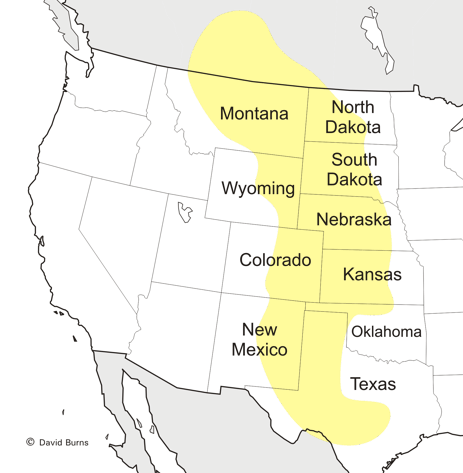 The Great Plains |
|
A successful
Nebraska homestead
The photo below shows a family farm in Nebraska in 1886. The windmill is for pumping water. The walls of the house are made of sod. Sod is the term for the top layer of the soil, with the roots of the grass holding it together. The early settlers on the Great Plains used sod to make their homes because trees for wood were so scarce. |
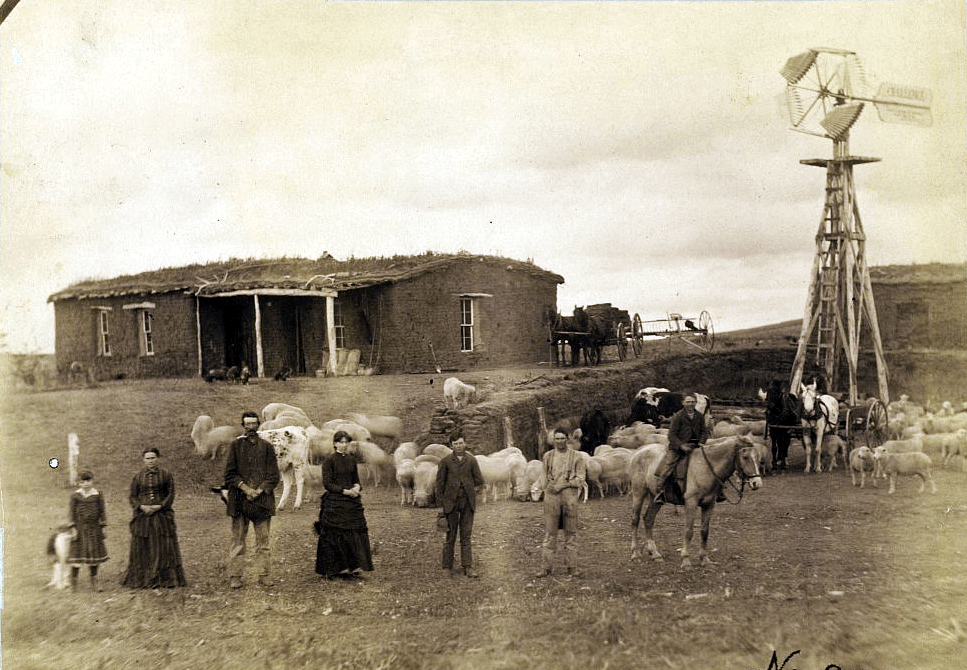
|
3.
Advances
in technology -
The Transcontinental Railroad Technological advances also helped settle the West. The Transcontinental Railroad is a good example of this. Two different companies built the line, helped with money from the federal government. The part shown in red was built by the Central Pacific Railroad company. The part shown in green was built by the Union Pacific Railroad company. Railroad lines already reached as far as Omaha, Nebraska, at that time. The Transcontinental Railroad was designed to reach from there to California. Once completed in 1869, people, supplies, and farm products could be shipped to and from the West easily. |
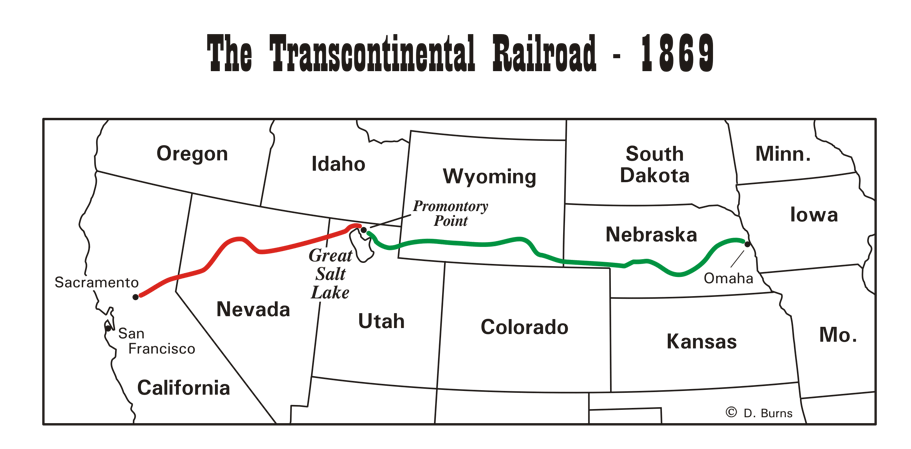
|
A railroad to
the West!
The drawing below shows the joining of the two parts of the Transcontinental Railroad line in Utah, in 1869. It was considered the greatest engineering project up to that time in history. The event was celebrated all across the country. |
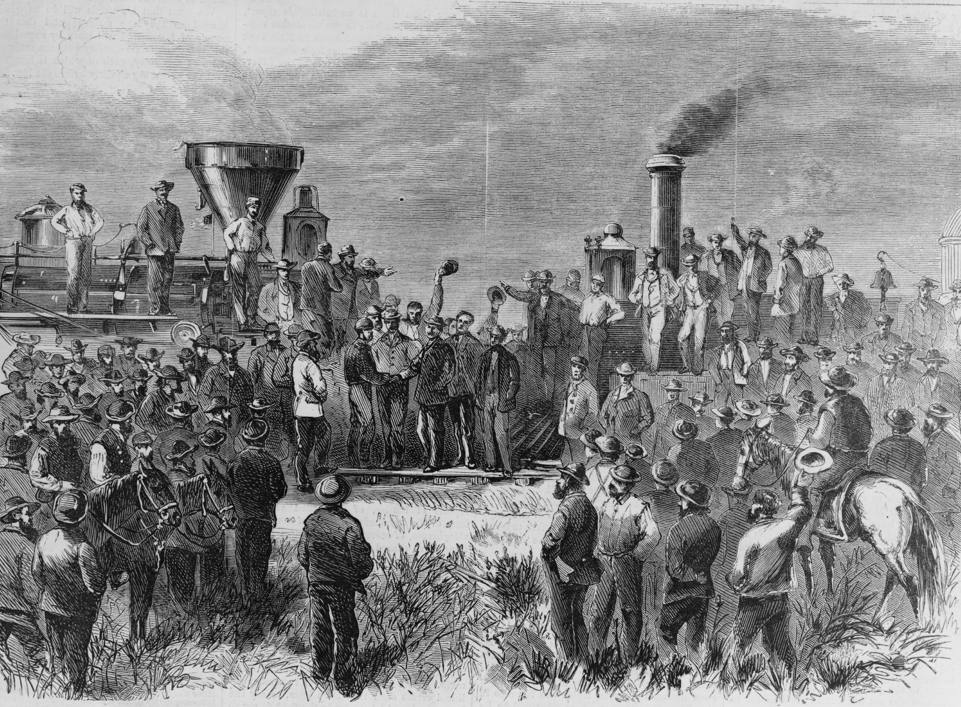
|
4.
Adventure
The promise of adventure was another big reason people moved to the West. For many people, the West seemed to hold the promise of unlimited possibilities. It gave a chance to live an independent life, far from the crowded cities and factories of the East. The photo below shows cowboys on a cattle ranch in Colorado. A life in the wide-open landscape of the West seemed the very definition of freedom, even if it was a life that also included many hardships. |
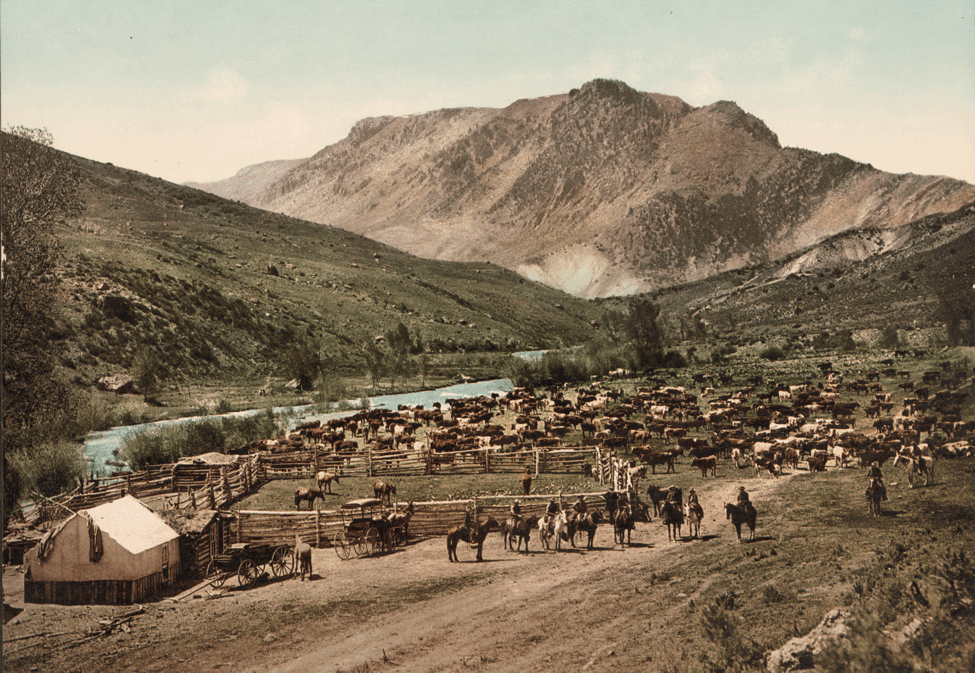
|
5. A
new beginning for former slaves
Formerly enslaved African Americans often saw the West as a place to make a new beginning. So many headed to Kansas in 1879 and 1880 that they came to be called "Exodusters." The term comes from the word "Exodus" in the biblical story of Moses leading the Hebrews out of Egypt. The photo below shows the town of Nicodemus, Kansas, around 1885. It is famous as one of the towns in the West founded by African American settlers who left the South. At its peak the town had about 700 residents. |

|
A proud family
and their home
The photo below shows some of the African American settlers who were part of the community around the town of Nicodemus, Kansas. The town still exists, and many tourists visit each year to see this part of America's history. |
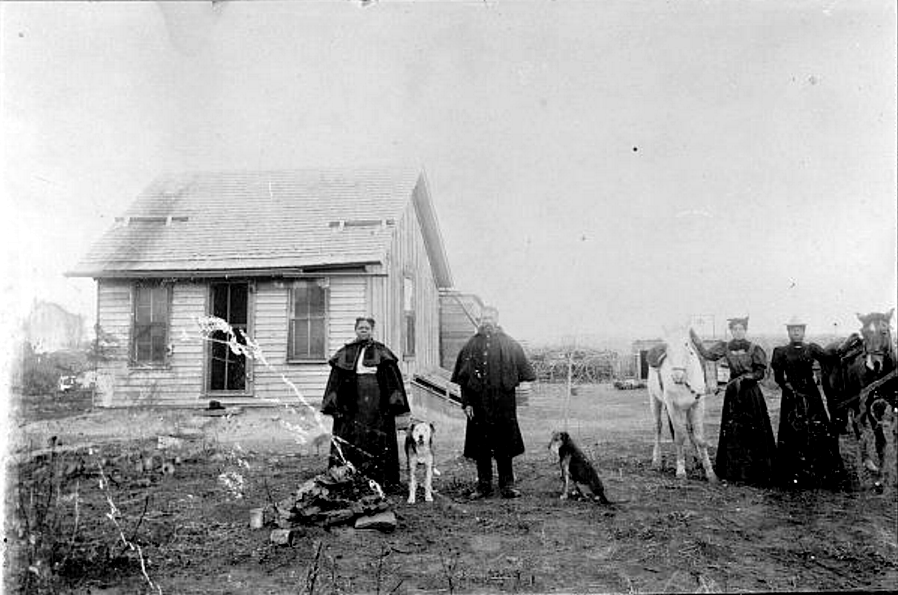
The photos and drawings are from the Library of Congress.
The maps are by David Burns.
Some images have been edited or resized for this page.
|
Copyright Notice
Copyright 2009, 2016 by David Burns. All rights reserved. As a guide to the Virginia Standards of Learning, some pages necessarily include phrases or sentences from that document, which is available online from the Virginia Department of Education. The author's copyright extends to the original text and graphics, unique design and layout, and related material. |